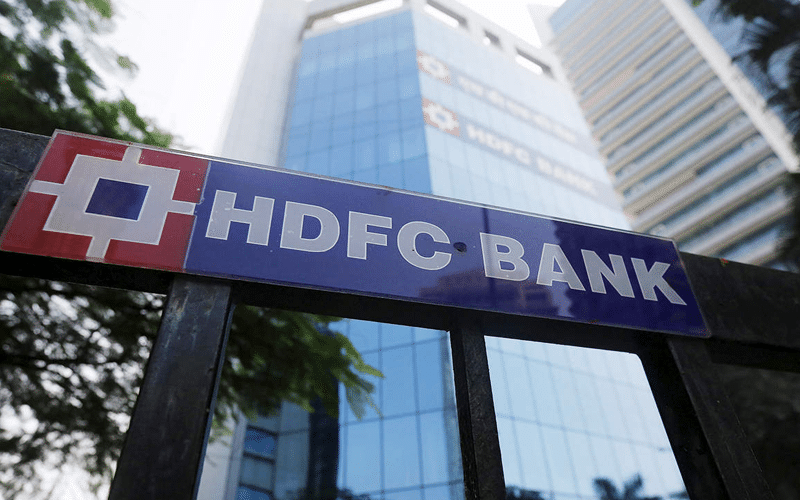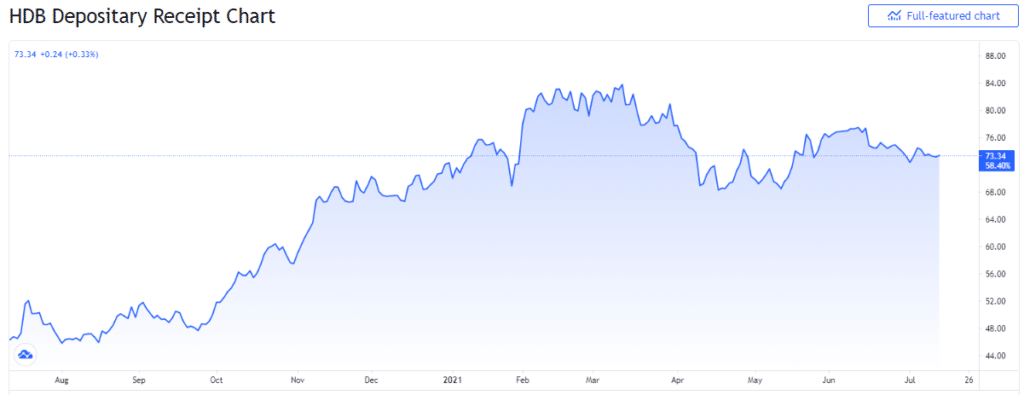
HDFC Bank is India’s largest private sector bank in terms of assets and the largest bank in terms of market capitalization. An emerging market like India with huge demand and population is credit-hungry. The blue-chip bank has been satiating the market appetite by growing its loan book at a high growth rate and simultaneously maintaining good asset quality. It also has a listed depository receipt on NYSE with the symbol HDB.
India’s banking sector has been plagued with a high ratio of non-performing assets (NPAs). Many of the banks have gross NPAs in the double-digit percentage of their book size. On the other hand, HDFC Bank managed to keep its gross NPA at 1.3% last quarter despite the country being on the receiving end of a terrible Covid-19 crisis. HDFC Bank is largely seen as a safe haven stock.
Earnings overview
Before the quarterly report, analysts were quite divided over their estimates of June quarter results for the stock. One of the leading brokerage houses, Motilal Oswal, estimated the bank’s net income to grow by 17.9% year-over-year, with net profit seen at INR 17.85 billion. While this was not a bad prima facie, it is below the usual expectation of 20% growth.
On the other end of the spectrum, another brokerage house expected the net income to grow by a whopping 27.8% year-over-year to INR 85.11 billion. As you can see, there is an almost 10% range in the estimates of net income growth, which is unusual for a large-cap stock in India. However, this divergence does reflect the change in circumstances for the bank in the past few quarters.
As of this writing, the bank reported the net income growth of 2.86% YoY to INR 1,655.80 million and the quarterly drop in Pre-provision Operating Profit (PPOP) of 15.3%, or INR 643.6 million, while net profit fell by 43.88%.
HDFC Bank losing its leadership status?
In October last year, Aditya Puri, the bank’s CEO, stepped down from his role after serving as managing director for 26 years. It was under his stewardship that the bank emerged as a leader and maintained a pristine reputation. While the change in leadership was widely expected and the transition was smooth, it did create uncertainty among the investors.
In December last year, India’s central bank and banking regulator, the Reserve Bank of India (RBI), barred HDFC Bank from issuing new credit cards. This was in response to several outages in the bank’s digital services over the past two years. The ban has been in place for the past six months and has cost the bank dearly as its competitors have gained market share in the lucrative credit card business.
About a month ago, the RBI fined HDFC Bank INR 100 million for irregularities in its automobile loan book. This is the first time the bank has faced any allegations on its integrity when it comes to banking practices.
This set of events has raised questions of whether the bank has been too slow to adopt new technologies. There have also been doubts on whether the new management will be able to walk the tightrope between growth and asset quality.
In the context of the above situation, HDFC Bank’s June quarter earnings are under special focus. A weak set of numbers would seriously hurt the bank’s leadership status, while strong earnings would point towards a bounce bank. As seen below, the stock has provided negligible returns since December last year, while the Indian benchmark Nifty has yielded nearly 40% returns in the same period.

Hence while even the lower range of earnings estimate and actual underperformance indicate steady growth in the bank, the real question is if the bank can regain its leadership status.





